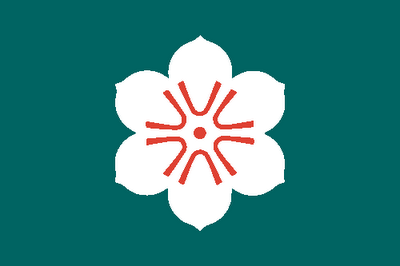When you're talking about flag, "coincidences" sometimes aren't what they look like. Many times a flag is intentionally similar to another, when the first taking the second as inspiration. An example easy to notice and study are the color combinations. Some flags are very influential, in the sense that's took as base to many newer flags. Here you can see some of them, grouped by the inspiration.
Pan-African colors
There's two palettes of colors known as pan-African colors: one is composed by red, yellow and green, while the other contains red, black and green.
The first set of color (green, yellow and red) is inspired by the flag of Ethiopian Empire.
This three colors have been specially used in Ethiopia since about 17th century, but the flag was only adopted in 1897. The meaning of the colors is disputed, but generally it's said that red is for the blood spilled in defense of Ethiopia , yellow is for the peace and harmony between Ethiopian ethnic and religious groups, and green for hope or land's fertility. The insignia in the middle of the flag is the Lion of Judah, used because the Ethiopian Dynasty claimed to have ancestry from King Solomon and Queen of Sheba, being named Solomonic Dynasty.
As Ethiopia, with exception of a brief period of Italian rule, resisted strongly to European colonization, many countries adopted this colors when gained independence from European countries, as symbol of sovereignty. They are also much used by the Rastafari Movement.
Other set of colors also known as "Pan-African colors" are composed by red, black and green, derived from UNIA (Universal Negro Improvement Association) flag.
The UNIA was founded by Afro-American activist Marcus Garvey, in 1920. It's commonly said that red stands for African blood, black for the African people and green for continent's fertility. It was adopted as an unofficial "Afro-American" flag and many African countries inspired in it to create their own flags.
Countries in Americas with great African-descendant population, e.g. St. Kitts and Nevis and Grenada, also adopted pan-African colors. See a small flag chart with some African countries with pan-African colors in their flag history:
[Click on images to zoom]
Pan-Slavic colors
Other great flags family is from pan-Slavic. They use the colors red, white and blue. It's important to notice that not all flags with these colors has pan-Slavic inspiration (like France, USA and UK). They are inspired by the flag approved by Pan-Slav Congress of 1848 (occurred in Prague). The colors, associated with freedom and revolution (e.g. French flag) and the same of Russian flag, were chose in a great number of Slavic countries. See the pan-Slavic flag and a flag chart with flags inspired by it.
Pan-Arab colors
Here's a challenge: can you say right now, without assistance, the differences between Kuwait and Jordan flags? You probably don't; if you can, congratulations, because flags of some Arab countries are very hard to be distinguished by non-Arabs. The reason is simple: they all have the same matrix, in this case the flag used during the Arab Revolt (1916-1918). Look at the flag:
The Arab revolt was an attempt to create an unified Arab country under territories of Ottoman Empire (ruled by ethnic Turks). The flag used during the revolt, considered Arab nationalist, was immediately adopted as symbol of Arab identity. See a set of recognized and unrecognized countries that adopt this colors:
It's important to notice that non-Arab Muslim countries, like Afghanistan and Pakistan, don't adopt this colors.
Pan-Iranian colors
Many flags are commonly thought to represent the pan-Arab colors, but actually represents the pan-Iranian colors, used by Persian people, majority in Iran, Tajikistan and Afghanistan. They're based in Persian flag (nowadays Iran); this one is from before 1906 (date unknown).
The small flag chart below show some flags using pan-Iranian colors:
Colors of Federal Republic of Central America
The Federal Republic of Central America (1823-1838) was a good attempt to hold together previous Spanish colonies in Central America, but the union disbanded, although until today they have friendship relationships and there were other attempts of reunification, e.g. the Greater Republic of Central America (1896-1898). See the flag of the Federal Republic:
The color of these flags are blue and white (Costa Rica added the red).
Colors of Gran Colombia
Finally, the last color-based flag family. In a similar case to Central America, the ex-constituent countries of Gran Colombia (officially Republic of Colombia; 1819-1831) adopted the colors of these countries. The unification ideology, influenced by the ideas of liberator Simón Bolívar, is having some voice last years. Gran Colombia used many flags, being the flag below the first and most famous of them:
The colors that defines this family are yellow, blue and red. Bolivia changed the blue by the green. See the flags of this family:
Ending...
This was a long post. Don't you think I deserve at least one comment? Please, if possible, subscribe to the blog. Thank you for reading!











































